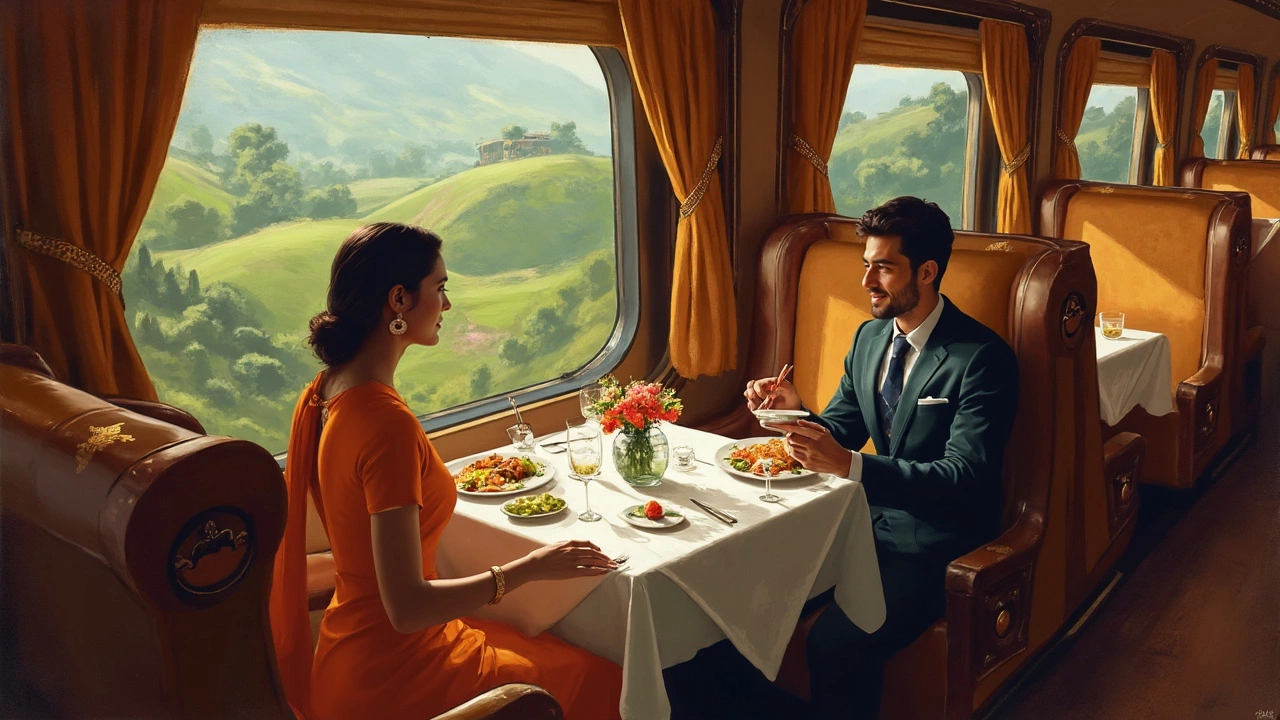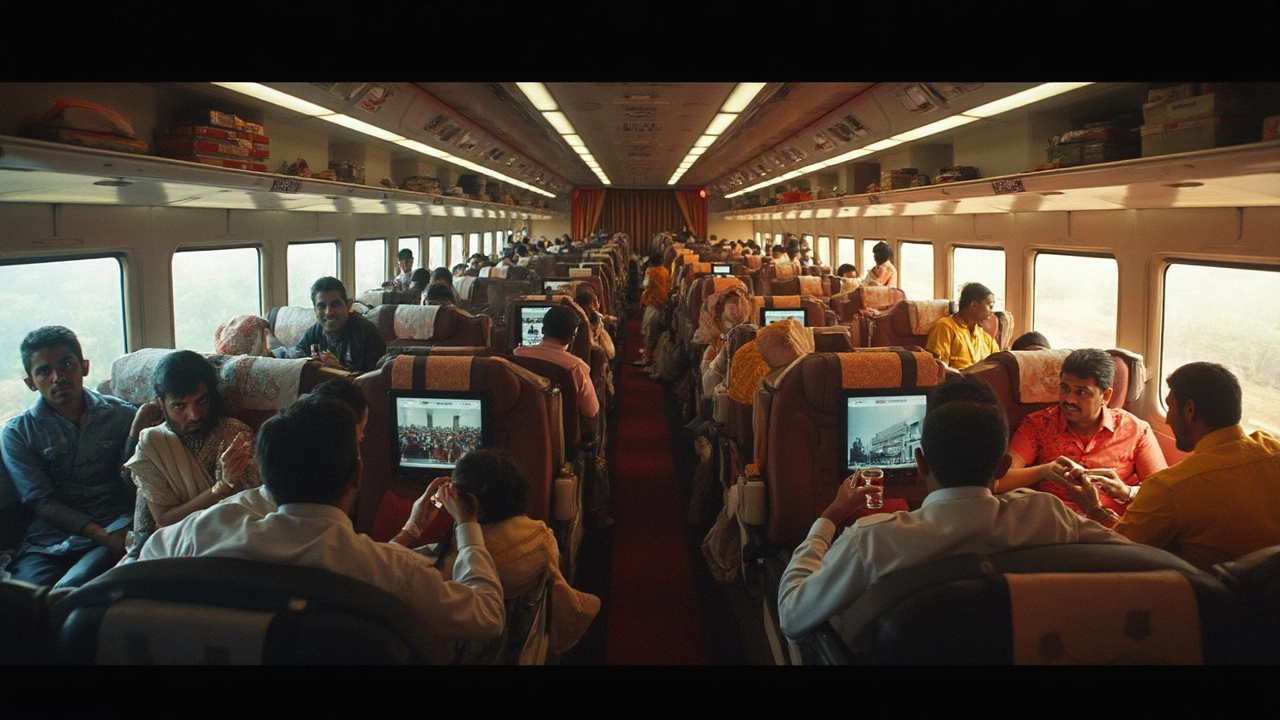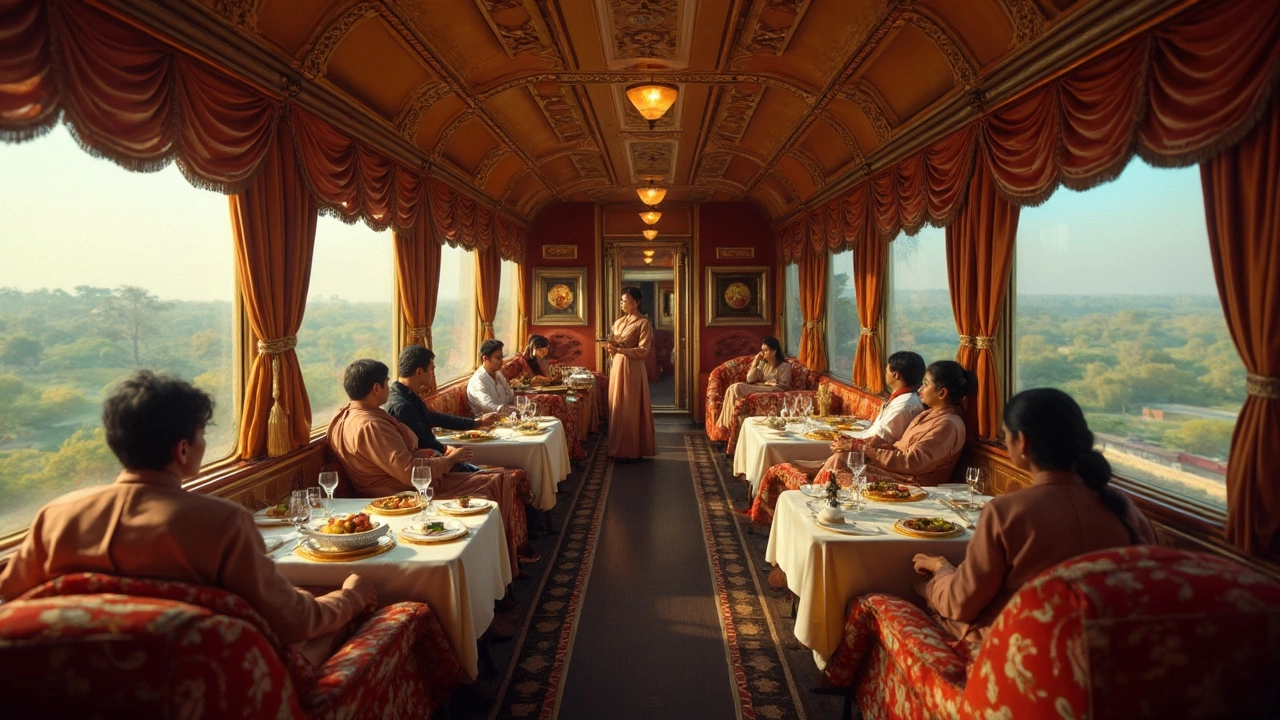Paying for 1st class on a train isn’t just about bragging rights—it changes the whole experience from the moment you reach the station. If you’ve only seen glimpses of posh cabins in movies, you might be surprised by what’s actually included (and what isn’t). Not every train is the Orient Express, but you still get a real step up from standard tickets.
Most people picture roomy chairs and fancy meals, but first class can go way beyond that—think quiet cars, power outlets at every seat, and sometimes even private cabins. On top routes, you get all-day snacks, actual glasses instead of plastic, and fast-track boarding so you skip the crowds. Pro tip: Some first class tickets even give you access to private lounges at the station—imagine comfy chairs, newspapers, free coffee, and way fewer people around.
- The Real Perks of First Class
- Seating and Space: Upgrades You Notice
- Food, Drinks, and Service
- Extra Touches: Lounges, Wi-Fi, and More
- Is First Class Worth It? Tips from Frequent Riders
The Real Perks of First Class
If you’re debating whether to upgrade, let’s get into what first class on a train actually means. It’s more than just a bigger seat. The main goal here is comfort and convenience, and you’ll notice it before you even board. On routes like Eurostar and Germany’s ICE, first class passengers get their own fast-track security and priority boarding. This isn’t just marketing—skipping a long line is gold, especially during rush hour.
Then there’s the space. Most first class seats are wider, have more legroom, and sometimes even recline into a bed on overnight lines. Table service is common, so you can actually eat with real cutlery, not a cardboard box on your lap. For some folks, that’s worth the premium right there.
- Complimentary food and drinks (sometimes hot meals, sometimes just quality snacks and barista coffee)
- Quieter, less crowded cars—even during busy times
- Dedicated staff who actually come check if you need anything
- Free Wi-Fi and charging plugs (most trains now keep these working in first class)
- Exclusive station lounge access, usually with free snacks, Wi-Fi, and comfy seats
Here’s a quick peek at what first class usually includes compared to standard tickets on major lines:
| Train Line | Standard Class | First Class |
|---|---|---|
| Eurostar | Regular seats, paid snacks | Spacious seats, free meals, lounge access |
| Amtrak (USA) | Limited food, basic seating | Roomier seats, free drinks, priority boarding |
| Deutsche Bahn ICE (Germany) | No extras | At-seat service, premium meals, lounge access |
The catch? Every train and country offers a slightly different package. Always check exactly what’s included before you buy, so you don’t get disappointed expecting caviar and champagne only to be handed a crisp sandwich. The key is that first class on most trains moves travel from just getting there, to actually enjoying the ride.
Seating and Space: Upgrades You Notice
The first thing you notice in first class is the space. Forget squeezing in next to strangers or fighting for elbow room—first class seats are built wider and spaced further apart. Ever tried to nap in standard? Here, the seats actually recline enough to matter, and there's a leg rest most of the time so you can stretch out without kicking your bag or the person in front of you.
Here's a quick look at the seat features on popular European trains:
| Train Line | First Class Seat Width | Seat Pitch (legroom) | Recline |
|---|---|---|---|
| Eurostar | 21 in / 53 cm | 37 in / 94 cm | Yes |
| ICE (Germany) | 21 in / 53 cm | 39 in / 99 cm | Yes |
| TGV (France) | 20 in / 51 cm | 36 in / 91 cm | Yes |
The real luxury isn’t just about numbers. It’s the peace and silence—a lot of first class carriages are adults-only, or at least way quieter than the free-for-all in standard. Some trains even offer single seating (no one beside you) or private compartments. USB and power sockets at every seat are now pretty standard, and you can actually use a laptop without balancing it on your lap the whole way.
- Reserved seating means no mad dash when you board—the seat printed on your ticket is yours, period.
- Extra luggage space makes life easier if you’re carrying a big suitcase, shopping bags, or even a pet carrier. (I take my dog Rufus sometimes; his bed fits under my seat—no complaints so far.)
- High-speed trains often have tables at each seat, perfect for work, snacks, or spreading out a puzzle or board game with your travel buddy.
If you’re tall, have back issues, or just dread cramped travel, these upgrades pay for themselves. You won’t find comfort like this on a plane unless you’re up in business class.

Food, Drinks, and Service
This is where first class really sets itself apart. Forget packed sandwiches—meals here look more like what you’d get at a business hotel or a nice café. Every train company does it a bit differently, but the main theme is quality and convenience.
On Eurostar, for example, you’ll get a three-course meal with wine or champagne included on their premium service, and the menu rotates often so frequent riders aren’t bored. In the UK, LNER’s first class gives you unlimited tea, coffee, and soft drinks, plus a cooked breakfast or a freshly prepared salad at lunch. Amtrak’s Acela Express in the US offers table service with regional dishes and complimentary drinks. Many European routes serve local specialties—cheese plates in France, tons of fresh bread in Germany, and surprise desserts that are actually legit tasty.
| Train Company | Sample Meal | Drinks Included | Service style |
|---|---|---|---|
| Eurostar (UK/France) | Three-course meal | Wine, Champagne, Soft Drinks | At seat |
| LNER (UK) | Cooked breakfast or light lunch | Tea, Coffee, Water | At seat |
| Amtrak Acela (US) | Regional dish, dessert | Beer, Wine, Soft Drinks | Table service |
| Deutsche Bahn (Germany) | Hot or cold meal | Beer, Wine | At seat |
It’s not just about what you eat, but how it’s served. In first class, everything comes to your seat, usually on real plates with real cutlery—no plastic sporks. The crew checks on you more often, and you don’t have to wait in line for snacks. If you’ve gotta work, they won’t interrupt you with long speeches or upsells either.
A quick tip: don’t be shy. If you have food allergies or just want an extra coffee, just ask—the crew is used to requests and usually happy to help. Some train apps even let you pick your meal in advance. And don’t forget to try the local specialties on cross-country trains. You’ll taste stuff you probably wouldn’t order on your own.
Extra Touches: Lounges, Wi-Fi, and More
Here’s where 1st class on a train really shows its value—extra perks that make the trip smoother before you even step onboard. First up, station lounges. Big rail operators like Eurostar and Great Western Railway offer 1st class lounge access with tickets. These lounges are usually worlds apart from the main waiting area: cleaner, quieter, and fully stocked. Think free coffee and snacks, newspapers, comfy couches, and often charging stations everywhere. At London Paddington’s First Class Lounge, you can even grab a shower if you have a long layover.
Wi-Fi is another game changer for anyone trying to work, scroll, or just keep the kids busy with Netflix. While Wi-Fi is spreading to standard carriages, it tends to actually work in first class—and it’s usually faster, thanks to fewer people logging on. East Coast Main Line, for example, offers upgraded Wi-Fi service in their 1st class coaches, so you’re not dealing with slow connections when you’re trying to download something big or jump on a video call.
But the perks don’t stop there. Check out some other extras you’ll often see in 1st class:
- Personal power sockets (sometimes two per seat, not just one)
- Smaller, quieter sections with fewer passengers
- Dedicated train staff nearby for questions or orders
- Welcome drinks and hot towels on premium routes
- Access to newspapers, magazines, and sometimes even tablets on loan
Sometimes it’s the little things, like wider luggage racks or at-seat coat service, that make you feel like you’re getting more for your money. Eurostar, for example, bumps up your travel with complimentary magazines and even business-style meeting tables in some cars.
Here’s a quick look at some extras major train companies include with the first class experience:
| Train Operator | Lounge Access | Wi-Fi | Bonus Extras |
|---|---|---|---|
| Eurostar | Yes | Unlimited & Fast | Priority boarding, drinks, magazines |
| Amtrak Acela (USA) | Yes (at main stations) | Fast | At-seat service, quiet car, hot towels |
| Great Western Railway (UK) | Yes | Unlimited | Snacks, showers in lounge, workspace |
| SNCF TGV (France) | Some routes | Faster than standard | Drinks, personal outlets, larger luggage areas |
If you’re planning to travel during peak hours or on a long-haul journey, these little luxuries and extras make a real difference—not just for comfort, but for your sanity, too.

Is First Class Worth It? Tips from Frequent Riders
Wondering if splurging on first class train travel is actually a smart move? Frequent riders have a lot to say—and their feedback might surprise you. The value comes down to your priorities: comfort, productivity, and sometimes just feeling less rushed.
Let’s get into the real-life takeaways:
- Commuters love space and quiet. Daily travelers say it’s easier to work, read, or just chill without kids running up and down the aisle or people playing videos at full blast. If you hate crowded trains, first class almost always guarantees a calmer vibe.
- Food quality varies a lot. Eurostar, for example, serves a full hot meal with wine in Standard Premier or Business Premier, while Amtrak first class passengers rave about the lounge access and upgraded meals, though food can feel airline-level sometimes.
- Wi-Fi’s not always perfect. Don’t assume you’ll get lightning-fast internet, even in first class. Check your specific route—commuters in Europe often get reliable Wi-Fi, but Amtrak riders in the US say it can drop out, especially in rural areas.
- Lounges aren’t always included. In the UK, trains like LNER and Avanti West Coast offer complimentary lounge access at main stations, but regional or shorter routes might leave this out. Always check the ticket details.
- Price swings a lot. If you book early, first class upgrades can be surprisingly affordable—sometimes just $20-30 above standard class, especially in Europe. Last-minute, first class can cost double or triple, so timing matters.
Here’s a quick comparison from regular riders about first class amenities on different popular train services:
| Train Company | Seat Space | Meal Included | Lounge Access | Wi-Fi |
|---|---|---|---|---|
| Eurostar | Yes | Yes | Select classes | Yes |
| Amtrak (Acela First) | Yes | Yes | Yes | Yes (spotty in areas) |
| LNER (UK) | Yes | Yes | Yes | Yes |
| SNCF TGV (France) | Yes | Sometimes | No | Yes |
So, when does first class make sense? If your journey is long, you want to get work done, or you just want to relax, it’s worth it, especially if you snag a deal. If you’re on a tight budget or only on the train for half an hour, you probably won’t get the full benefit. One last tip: if lounges and meals matter to you, double-check what your ticket actually covers—those perks can change by route, train model, and even the time of day.
